Where it is now we have a forklift, but where it is going I'll be using an engine hoist, I'm going to do some minor disassembly to check things out and grease, but first order of business is getting it out of the warehouse where I had it delivered, which means breaking it down into some of the larger components (really just the table and head I think should do it)
-
Welcome back Guest! Did you know you can mentor other members here at H-M? If not, please check out our Relaunch of Hobby Machinist Mentoring Program!
You are using an out of date browser. It may not display this or other websites correctly.
You should upgrade or use an alternative browser.
You should upgrade or use an alternative browser.
Checking Out A Bridgeport: What To Watch Out For.
- Thread starter Metal
- Start date
- Joined
- Feb 8, 2014
- Messages
- 11,144
A fork lift makes life easy.
The head breaks down into three major components; the motor and housing, the back gear assembly, and the actual head. Each one can be manhandled into place for reassembly. The reason I say this is getting the assembled head back in place with an engine hoist might be a problem if you don't have some way of increasing the lift height.
The table can be put back on by setting it on a table and adjusting the height with the knee, it just slides back into place. One note: Remove the gib before removing the table, and put the gib back in after the table is back in place.
The head breaks down into three major components; the motor and housing, the back gear assembly, and the actual head. Each one can be manhandled into place for reassembly. The reason I say this is getting the assembled head back in place with an engine hoist might be a problem if you don't have some way of increasing the lift height.
The table can be put back on by setting it on a table and adjusting the height with the knee, it just slides back into place. One note: Remove the gib before removing the table, and put the gib back in after the table is back in place.
I fully expect to take the head apart on my workbench and inspect/clean/lube it, there's just too much stuff going on inside of it to not give it a once over, Ive seen on youtube a guy made a spindle mount that attaches to the table, then he uses the table controls to remove/replace the head, which is pretty slick, which I may consider for putting it back together!
- Joined
- Feb 8, 2014
- Messages
- 11,144
Ive seen on youtube a guy made a spindle mount that attaches to the table
Now that's a cool idea that I never thought of!

- Joined
- Feb 8, 2014
- Messages
- 11,144
give me a few i'll track it down!
here we go, pretty clever guy, its just a plate with a reinforced "collet" on it
That is very cool, I'm going to have to build one of those next time I need to pull a head. Thanks for posting!
So! started disassembling and moving, everything is going well. and we're down to the ram and column!
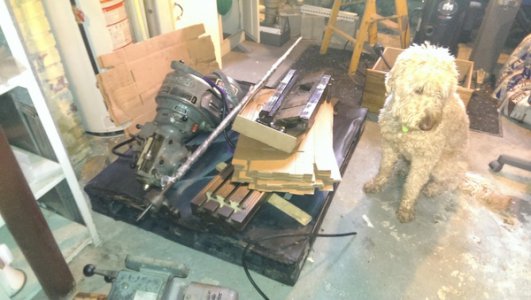
Some questions
1: It appears this guy either used grease or the oil became black and thick, I was planning on pumping up a weed sprayer and spraying way oil through it to verify all the paths are clear, a lot of hand degreasing in my future.
2. I need the sizes of the threads of the zerk fittings, since its apart it'll be easier to 1 shot lube it now while I assemble it, anyone know?
3. leadscrew nuts are actually... unbelievably cheap on ebay (~45 per axis, what? I was expecting hundreds) is there a reason I shouldn't just replace these as I'm reassembling? I'm not sure how to measure wear on a the leadscrew, but it "looks" perfect.
4. as above, I'm not sure how to check if a gib is worn, they look fine to me, if caked with grease
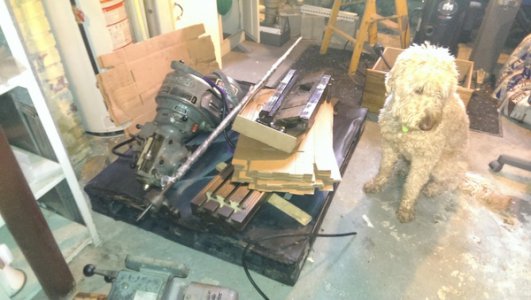
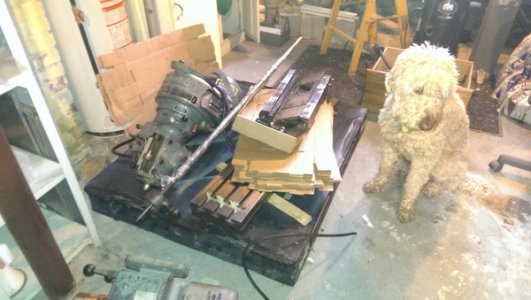
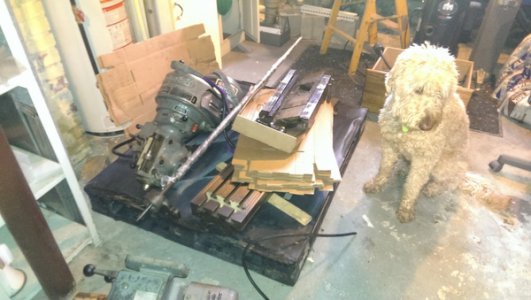
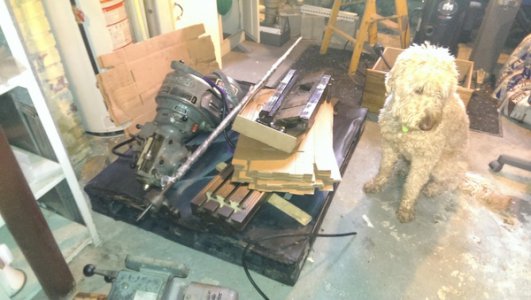
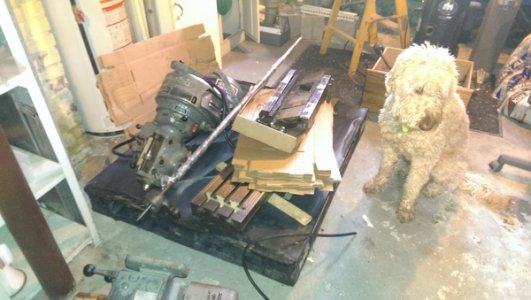

Some questions
1: It appears this guy either used grease or the oil became black and thick, I was planning on pumping up a weed sprayer and spraying way oil through it to verify all the paths are clear, a lot of hand degreasing in my future.
2. I need the sizes of the threads of the zerk fittings, since its apart it'll be easier to 1 shot lube it now while I assemble it, anyone know?
3. leadscrew nuts are actually... unbelievably cheap on ebay (~45 per axis, what? I was expecting hundreds) is there a reason I shouldn't just replace these as I'm reassembling? I'm not sure how to measure wear on a the leadscrew, but it "looks" perfect.
4. as above, I'm not sure how to check if a gib is worn, they look fine to me, if caked with grease





- Joined
- Jan 2, 2014
- Messages
- 8,852
For any small oil channels I'd be tempted to use a solvent first to remove as much of the dry grease as possible. Once that washes thru, then start feed copious amounts of the recommended lubricant thru. It's easier on the gibs where you can scrape most of it off once they're out.
With solvents use appropriate protection; ventilation and eye-shield......it's amazing how much even a manual wire brush can throw at you. Also for flammable solvents be careful of any flame or spark (heaters, motors, a powered wire brush can also spark......)
-brino
With solvents use appropriate protection; ventilation and eye-shield......it's amazing how much even a manual wire brush can throw at you. Also for flammable solvents be careful of any flame or spark (heaters, motors, a powered wire brush can also spark......)
-brino

